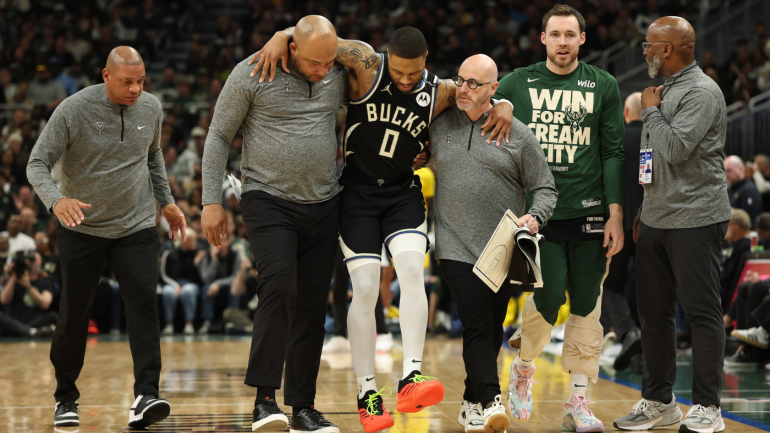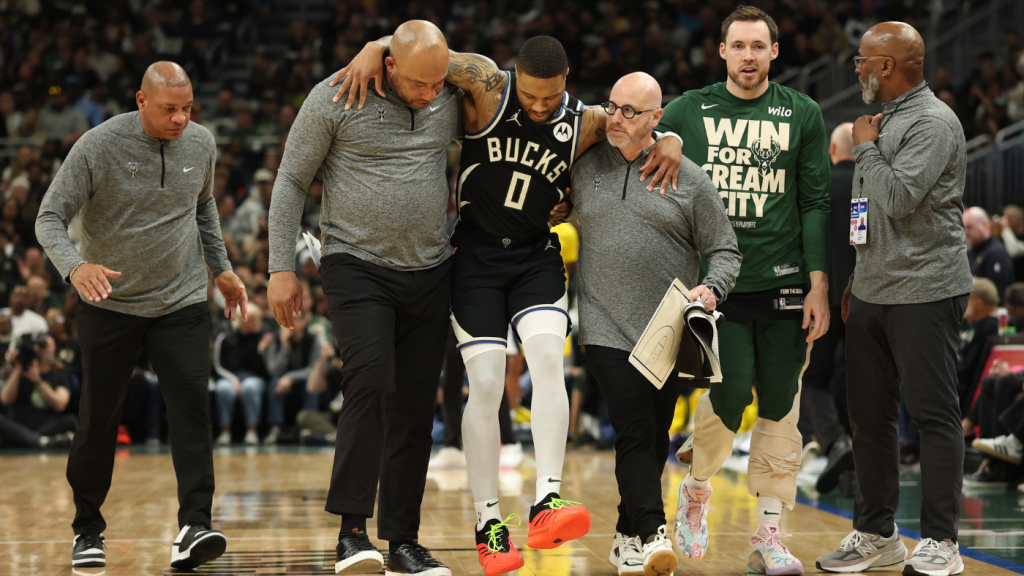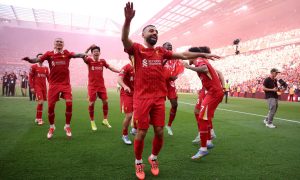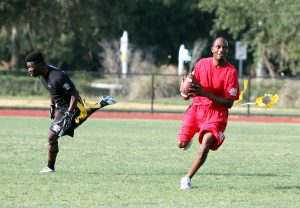Bucks coach Doc Rivers admitted the prognosis for Lillard is ‘not very promising’

MILWAUKEE — A hush fell over Fiserv Forum in the middle of the first quarter of Game 4 between the Milwaukee Bucks and Indiana Pacers on Sunday night. Damian Lillard, just back from a blood clot in his calf that had kept him sidelined for over a month, was sitting at the 3-point line, immobile and in disbelief.
The nine-time All-Star was chasing an offensive rebound off a missed 3-pointer by Gary Trent Jr. when he suddenly collapsed and immediately reached for his left calf and Achilles tendon. At the next dead ball, Kyle Kuzma helped Lillard to his feet, but he couldn’t put any weight on his left leg. Lillard hopped his way to the bench with the assistance of Doc Rivers and the team’s medical staff, before leaning on Andre Jackson Jr. to make his way down the tunnel.
Before the first half was even over, the Bucks announced that Lillard would not return due to a “lower left leg injury,” which only raised the level of concern. Soon after, Chris Haynes reported that there is fear Lillard suffered a torn left Achilles tendon.
Lillard was diagnosed with a blood clot in his right calf on March 25, and at that time it looked like his season may be over. However, his camp and the team expressed some optimism that he would be able to return at some point. And he did just that in Game 2 against the Pacers.
“It was a little bit scary,” Lillard said prior to his return, when reflecting on the experience. “I think I’ve had a couple of surgeries in my career. I’ve had things I’ve had to deal with, you know, with an ankle or a knee, Achilles, calf, whatever it might be. But those are all things that you go to rehab, you deal with it like that, like an athlete would.
“I’m thinking that’s what I was going into, and then you see a blood clot. Obviously, that’s a thing that can affect your life.”

In his first two games back, Lillard looked exactly like someone who had been unable to play basketball for the better part of a month. He shot a combined 6 of 25 from the field in Games 2 and 3, but his mere presence was a major boost for the Bucks. Back at home for Game 3, the Bucks pulled away in the second half to finally get on the board in the series, inspired at times by some rare defensive moments from Lillard.
If Lillard has indeed torn his Achilles tendon, it’s hard to imagine the Bucks coming back in this series. And the concerns — both for Lillard and the Bucks — extend well beyond just the outcome of this series.












